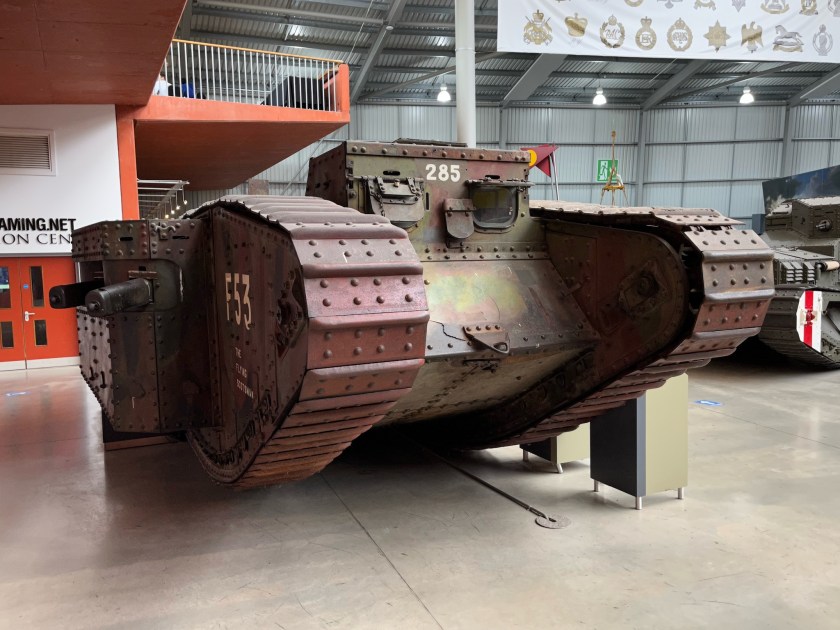Mark II Female F53 285 The Flying Scotsman was on display at Bovington. It took part in the Battle of Arras in April 1917.
Originally intended for training in the UK, this Mark II wasn’t built for battle. Made from boilerplate steel, it lacked the hardened armor to resist machine gun fire. Despite this, it found itself thrust into combat at Arras in 1917. One of 25 Male Mark IIs built by William Foster, it’s the world’s oldest surviving tank to see battlefield action.
Christened “Dahlia” (D5), it belonged to 3 section, 10 Company, D Battalion. A shortage of Mark I tanks forced the use of 45 training Mark IIs, including Dahlia, during the Battle of Arras in April 1917.
D5’s story continues. With the arrival of the more advanced Mark IV tanks, many Mark IIs faced decommission. D5, however, dodged the scrap heap and received a new lease on life. Its guns were removed, replaced by a larger roof hatch, transforming it into a vital supply carrier christened “The Flying Scotsman” with the designation F53. Some believe it even saw action at the Battle of Cambrai later in 1917.
Through an extraordinary twist of fate, D5 escaped the fate of most wartime vehicles. It returned to England and eventually found a permanent home at The Tank Museum in Bovington in 1949. Initially mistaken for a Mark I due to its modifications, D5’s true identity was revealed when a real Mark I joined the museum’s collection in 1970. After years displayed outdoors, the museum’s expansion finally offered D5 a well-deserved place in the new tank hall, safe from the harsh British weather.
Today, D5 stands as a testament to wartime improvisation and the sheer resilience of these early armored vehicles. It’s a reminder that even training tanks can play a crucial role, and that sometimes, history takes unexpected turns, preserving a piece of the past for future generations.

